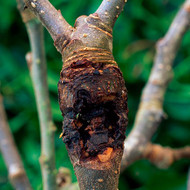“Nothing in the world is worth having or worth doing unless it means effort, pain, difficulty.” Theodore Roosevelt.
Pears have a reputation for being difficult. They need a warm, sheltered site, especially if trying to grow them in the North, hardly any are self-fertile so you normally need to have two of them, and they can be prone to several pests and diseases. With the correct choice of variety, it is possible to overcome the first two issues, in this article we will look at how to deal with the third. We’ll look at some of the more common problems and see how with a little care and attention it is possible to grow a healthy tree and enjoy the incomparable fruit.
Pears are a member of the Pome fruit family along with apples and quince, and thus share some of the same pests and diseases. Codling moth will attack both apple and pear trees, and very little causes the fruit grower as much disappointment as patiently waiting all summer for the fruit to ripen, only to bite into the fruit and discover a maggot inside (or even worse, half a maggot!) The wingless female climbs the tree in early autumn to lay eggs. These hatch in spring and the larvae burrow into the fruitlets. They can cause the fruit to fall before it is fully ripe - the larvae then burrow into the soil, pupate and emerge as adult moths. Fortunately the cure is very simple - put greasebands around the trunk of the tree in late summer. This physical barrier stops the moth climbing up and makes sure your fruit are untroubled by this serious pest.
Two of the main pests to affect pear trees are however specific to pears - pear leaf blister mite and pear midge.
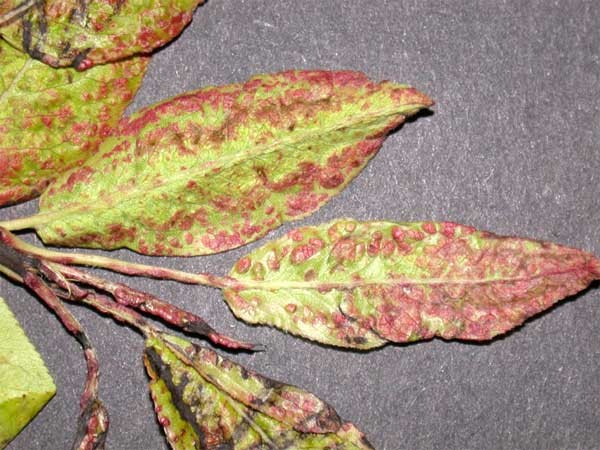
The blister mite is probably the most widespread pest of pear trees in this country. The microscopic mite lives inside the leaves and causes yellow or pink blotches to appear on new foliage in the spring. These blotches turn into small blisters and darken over the summer to dark brown spots. It looks horrendous - on a badly affected tree almost all the foliage can be marked - but fortunately it has very little effect on the tree. It certainly does not affect growth or cropping, so the best approach is just to tolerate it. There is no chemical control. If only a few leaves have blisters, pick them off and burn them. If over half the leaves are affected, you will actually weaken the tree more by removing the leaves, so leave well alone.
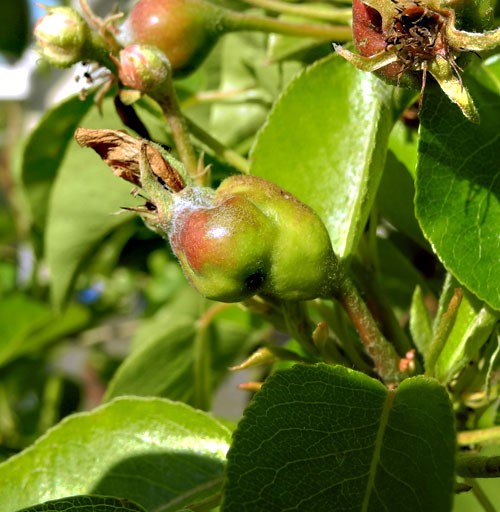
Pear midge is another serious pest. The young fruitless will initially look fine, but as from early summer they will start to turn black from the base of the fruit upwards. The fruit will fall early and small white and orange maggots will emerge and burrow into the soil in order to overwinter. Sometimes only part of the crop will be affected, but in severe cases you can lose the entire crop. No chemical control is available, so the key is to break the cycle by removing the fruit before they fall. If the tree is large and fruit are out of reach, spread a large plastic sheet under the tree to catch the fruit. Birds will enjoy both the fallen fruit and the maggots as they emerge!
The main diseases which affect pears are scab, canker, pear rust and fireblight. Pear scab often first appears as brown blotches on the foliage, but can also appear as brown spots on you fruit, which turn into sunken lesions which crack and allow other infections such as brown rot to take hold. Scab is more of a problem in wetter climates and in cool wet summers - it was almost unseen in last year’s glorious summer. Good hygiene is the key here - rake away all fallen leaves and windfall fruit in autumn to remove the spores. Winter washing (see side panel) will also break the cycle and help keep fruit as clean as possible.
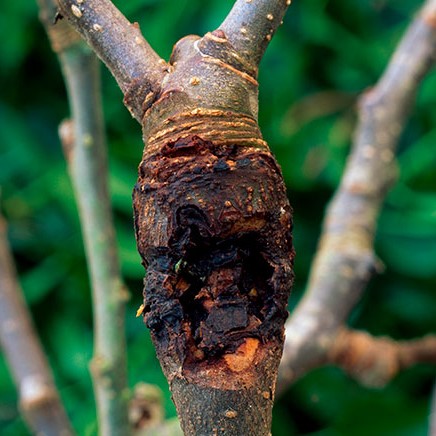
Canker can be a serious problem, especially in wetter areas of the country. Small patches of bark will begin to flake, and if ignored these lesions will girdle the stem and growth above this will die. Some varieties of pear are resistant (Beurre Hardy, Concorde, Jargonelle and Onward are some of the most resistant) so choose one of these if you live in a damp climate. The only cure is to prune out affected wood, cutting back to a healthy bud.
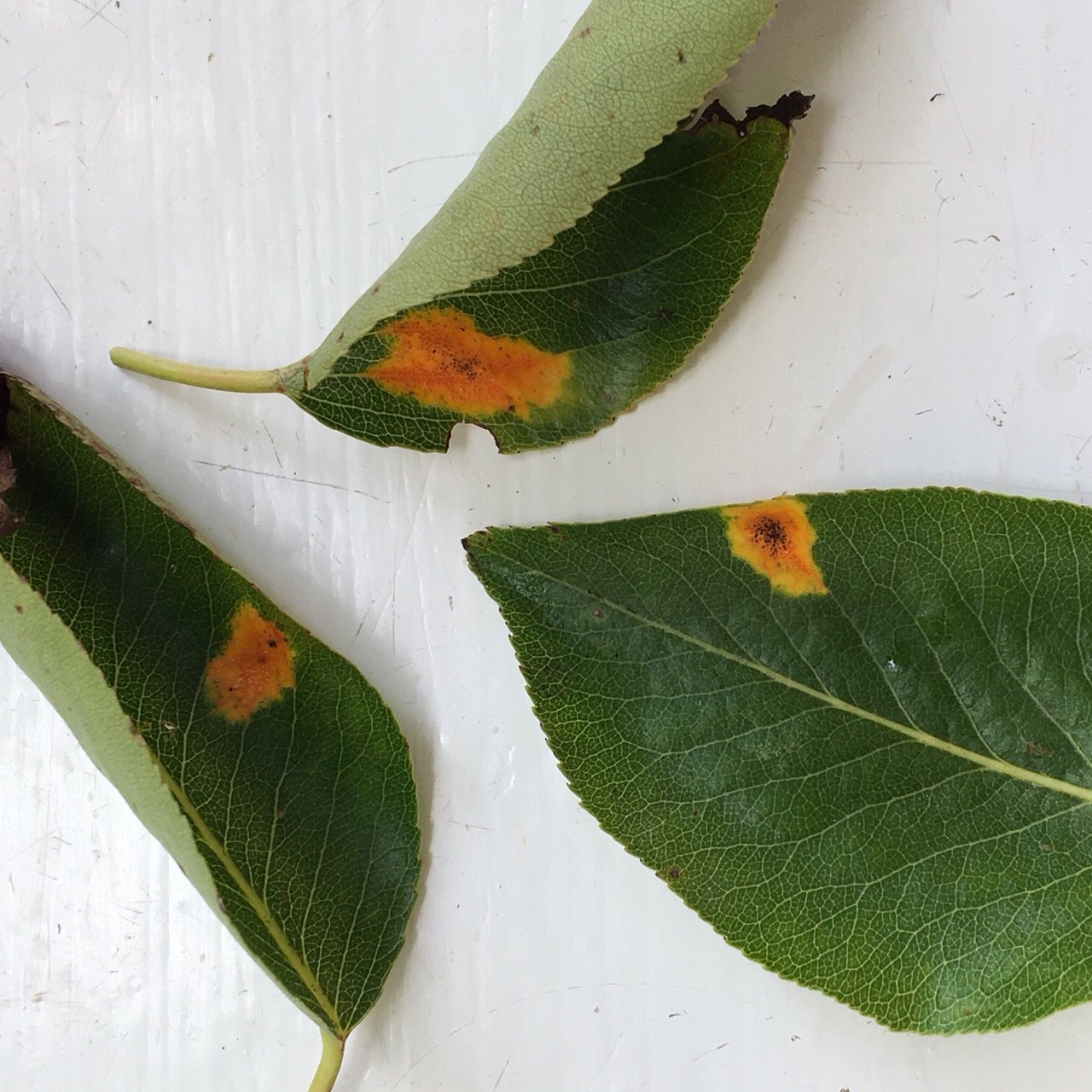
Pear rust is another common fungal disease. Bright orange spots appear on leaves in summer, and later on you will notice brown galls under the leaves. This fungus needs a live host to survive, so overwinters on nearby juniper plants. It’s almost impossible to get rid of - the sores are windburned and can travel long distances and there are no effective fungicides for fruit trees. If only a few leaves are affected pick them off, but like blister mite you should leave badly infected trees alone. It looks unsightly, but doesn’t cause much harm on an otherwise healthy tree.
Fireblight is much more of an issue in the south of the country - for once a problem that those of you in cooler climates won’t have to worry about! However, it is an extremely serious issue for gardeners south of the Midlands. The first sign is normally blossom browning and dying, but soon after branches and stems will start to die back. The brown leaves will cling to the stems, giving the appearance of the plant being scorched. The only remedy is to prune out these dead stems. Cut back by at least 30cm to make sure you have removed all traces of the bacteria. Keep a rag soaked in methylated spirit handy, and wipe your secateurs after each cut to stop the problem spreading. The key is to keep an eye on your trees, as early intervention will get the problem under control promptly and spare more drastic action later on.
Don’t be disheartened! I know this all seems as if growing pears is fraught with difficulty, but in reality for most gardeners, in most years, pears will be trouble free. And as Teddy Roosevelt knew, all the effort will be worthwhile in the end.
Top tips for healthy trees.
1 - good hygiene. Clear away fallen leaves and fruit, remove prunings and winter wash every year.
2 - prune. Regular pruning improves air circulation and helps keep trees and fruit healthy. Congested growth is a haven for pest and disease.
3 - feed carefully. Excess nitrogen causes soft, sappy growth which is more susceptible to disease. Use high potash feeds, and seaweed foliage sprays during the growing season.
4 - keep chickens! Running poultry under orchard trees helps keep unwanted grubs and larvae under control.

